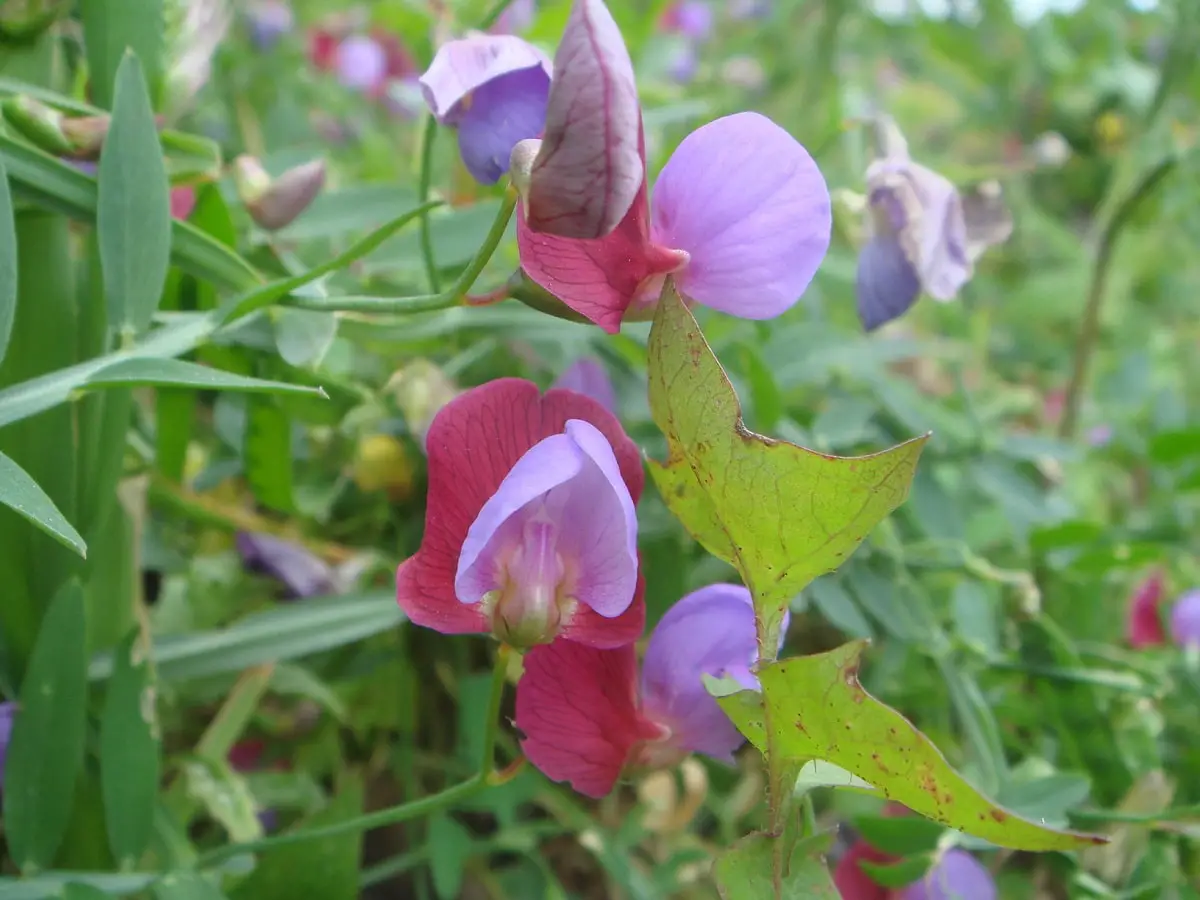
Plant Lathyrus clymenumit will help you a lot if what you are looking for is a climbing plant that adorns some kind of wall in your home. Its intense green color, in contrast to its colorful flowers, make this herbaceous plant a great option for the patios of urban houses.
This is a very well-known and widespread species throughout the Iberian Peninsula, which ignites and develops in all kinds of spaces and gives beauty to any type of outdoor environment.

The Lathyrus clymenum it is an annual plantwhich can reach from 30 centimeters and reach up to one meter in height. It is a type of climbing plant, so its stems, which seem to have wings, are found in a crawling way, always looking for a surface to soak up.
At its bottom, the leaves do not have a particular characteristicbut rather are regressive. But in their middle and upper part, they transform into compound leaves, which contain linear leaflets that can reach between two and six centimeters, with a width of approximately between 3 and 11 millimeters. Its branches will be in charge of making this climbing plant and its stipules will be the necessary structure so that they remain hanging to any type of surface.
Flores
Its flowers represent a contrast with the green of its leaveswhich offer a special beauty to the plant Lathyrus clymenum. These grow in great numbers, being only between 15 and 20 millimeters long and colors that vary between red, carmine and violet.
It has the same teeth as the calyx, these being shorter than the tube and a pod that can reach 7 centimeters long and 12 millimeters wide, containing between 5 and 12 seeds each. Its petals have a smaller structure than its calyx as well as its banner is spatulate and with a round blade. Its glabrous body has two humps inside the blades, which, as mentioned before, are purple and pink during their flowering period, and then turn red in moments of dissection.
Fruit
The characteristic of its fruits is its obovate shape, can reach up to about 80 millimeters long by 30 wide. It has a ventral beak, as well as two ventral keels. Regarding its seeds, these can reach 7,5 millimeters long and reach a width of 6,5 millimeters. Its shape is usually rounded and trasovado and its texture is completely smooth, presenting only roughness in some cases. Its flowering occurs between the months of February and July.
Habitat
The ecosystems in which this plant conventionally develops are the undergrowth, grasslands at the edge of crops and bushespresenting its greatest splendor on surfaces that do not exceed 1500 meters above sea level.
There is no particular substrate in which this type of plant does best. It resists different types of soils being able to develop for example in places with outcrops of rocky type. If the soil has cool and dry characteristics and the climate of the place where it can develop is not cold enough, it will grow without any inconvenience. They are very common on the edges of trails and roads.
Distribution
This plant is found in all kinds of regions around the Mediterranean, the Iberian Peninsula being the place where it is most found, so in some places around the world it is also known as Spanish Vetchling.
In southern Europe this plant is also very common, extending to North Africa, the Azores, the Canary Islands and Madeira. The northern plateau and some places on the Cantabrian coast are the only places within the peninsula that this species is not found in large numbers. Not all types of Lathyrus clymenum They have the same characteristics in their morphology, in fact, many can vary in different aspects, such as their length in general or the length of their peduncles, as well as the size of both their seeds and their fruits.
The coloring of their wings is also highly variable. It is called Lathyrus clymenum those that show a particular coloration on their wings that ranges from blue to lilac, differentiating from this to the lathyrus cicerawhich was previously entered into the same group and currently differs by showing a reddish color on its petals.
Cultivation history
Although at present and especially in the Iberian Peninsula, this plant grows without any type of cultivation, taking into account the properties that we mentioned above, this plant has quite an important cultivation historyespecially in Greece, where it is used to make a dish that is part of the delicacies of the area.
Properties

Through various biological studies it has been concluded that This plant has properties that are very beneficial to our health. Apparently, the seeds of this plant, which has been used as a post-war food, in times when it was impossible to find any other type of seed with which to make flour, has nutritional and antioxidant characteristics housed in its polyphenols.
When we talk about polyphenols we refer to certain types of antioxidants that we can find in all kinds of fruits and vegetables, as well as in their derivatives, such as wine. These, upon entering our body, they are in charge of protecting our bloodpreventing it from oxidative stress that has to do with both natural aging and the spread of some type of disease.
Incredibly, these and other species contain more polyphenols than many of the legumes that we usually use for constant consumption within our diet. In some of these cases, up to twice as many polyphenols were detected as in legumes such as chickpeas or soybeans.
In all these cases, also the antioxidant content was even up to two times higher than in other types of legumesso it would be very convenient for human consumption, but in a measured way, since the very frequent consumption of these could bring a disease that affects the spinal cord which is known as Lathyrism.

